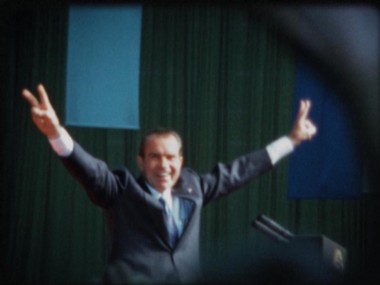As a new parent, I’ve been struck over and over again by just how richly documented our world is today. I wouldn’t be at all surprised to learn that, after just seven and a half weeks, my trove of newborn photos had already far surpassed the accumulated total of photos from my own pre-digital childhood some three to four decades ago.
Part of that is the ubiquity of camera phones—and specifically, the iPhone, which has sparked a widespread rediscovery of point-and-shoot photography and a growing number of online communities dedicated to “iPhoneography,” as it’s come to be called. Puffed-up photo snobs may occasionally complain, but there’s no going back—of the five most-used cameras on the popular photo-sharing site Flickr, the three top spots belong to various models of iPhone. Number four is a $3,000 Canon.
But if the scale of it all has changed, the impulse has remained the same. Ever since the introduction of portable handheld cameras, we have documented our lives both public and private, dramatic and mundane. And sometimes—as with Abraham Zapruder’s little home movie from Dallas—a tiny moment can change a nation. This week, home movies from another era give us a new point of view on our national history.
Director Penny Lane’s new film Our Nixon is an all-archival documentary that looks at the Nixon administration through an intimate series of lenses—those of the Super 8 home movie cameras wielded by three of Nixon’s top White House aides. A uniquely personal history made up of over 500 reels of film, it was captured by H.R. Haldeman, Dwight Chapin, and John Ehrlichman (who, it turns out, enjoyed filming hummingbirds), during four heady years, only to be seized by the FBI when the administration was pulled into the Watergate investigation. When the curtain came down, the aides were in prison and their footage was dutifully filed at the National Archives, where it sat nearly forgotten for four decades.
Lane—who, along with producer Brian L. Frye, will attend the one-night-only screening—weaves that footage together with other film from the era to create a complex portrait of a presidency that is so often reduced to its ignominious end. Instead of telling us the same old story yet again, they take the same old story and remind us that, surprisingly, we haven’t yet followed all of its threads.
Also this week: Amherst continues its crowd-pleaser Friday night series with a show of Troll 2, a film that got its start in the world as a way for director Claudio Fragasso’s wife to get back at some vegetarian friends. Giving you the details about that will not make it seem any more clear, but I can tell you that the film was so gloriously awful that naming it Troll 2 was actually seen as a plus—originally titled Goblins (there are no trolls in the film, by the way), film distributors considered the product so putrid that they renamed it in the hopes it would attract a sequel-friendly crowd.
An interesting side note: the film’s child star, Michael Stephenson, went on to direct Best Worst Movie, a documentary about the making of Troll 2. And while that film continues to hold its iron grip on a remarkable zero percent rating on film site Rotten Tomatoes, the documentary about its creation—which is available for streaming via Netflix—tops out at an impressive 95 percent. What better treat could there be for the adventurous filmgoer than to see the curds and the cream alike, all in one weekend?•
Jack Brown can be reached at cinemadope@gmail.com.



